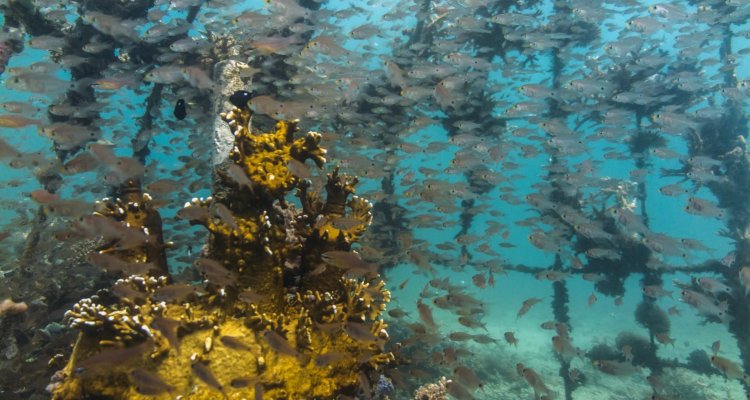Wageningen University & Research Study Shows Success Of Newly Constructed Coral Reef
Coral reef restoration works: both the degree to which artificial reefs are covered in coral and the biodiversity of the population of fish and other animals around the coral is similar to that of natural reefs in the vicinity. This is shown in a study conducted by Wageningen University & Research and published in the leading scientific journal Frontiers in Marine Science. WUR researchers and the REEFolution Foundation have successfully constructed a new, living coral reef off the southeast coast of Kenya.
In addition to protecting coral reefs, new methods such as restoration play an increasingly important role. In recent years, scientists have contributed to improving and evaluating these methods.
The method used by the researchers to construct the reefs is two-phased. First, small pieces of coral are suspended in specially designed growing structures (coral trees) where they have optimal circumstances to grow into adult colonies. Divers then attach the coral to structures that are placed on the seabed. Thus, barren sand and debris fields can be changed into lively coral reefs.
The same ecological role
Researchers checked how much coral and other life forms were present in the area both before and after constructing the reefs. They compared natural reefs to barren plains and artificially constructed reefs. After two years, the biodiversity and amounts of fish and bottom dwelling animals on the barren plains were still extremely low. The newly constructed reef was home to many more species and plants, as well as to healthy growing coral.
Many young corals were also found. These corals had found their way to the new reef by natural means. ‘This is an excellent development’, says Ronald Osinga, assistant professor of marine animal ecology in Wageningen and representing the Netherlands within the project. ‘We are very excited to see how this will develop further. For now, the biodiversity of the corals is low, because the population consists mainly of individuals that we attached to the structure. And the fish population differs from that in the natural reef, but it fulfils the same ecological role.’
Playing with structure
How much the biodiversity on the new reefs increases depends on how much coral has been attached. Still, interesting differences were seen between the different types of structures. Pre-grown corals appeared to develop best on metal cages, while young natural corals settled best in concrete structures.
A smart combination of the two could provide the best of both worlds in the future. ‘And, occasionally, you run into something unexpected’, says Ewout Knoester, a WUR-researcher in Kenya. ‘Corals can be easily attached to concrete structures with bottles encased in them. However, sea turtles like to lay on these structures and rub their shields against them. Pleasant for the turtles but not for the corals. We are now considering adding special resting areas for turtles.’
Help from villagers
The project in Kenya is conducted in large part by trained fishers from neighbouring villages. They have been taught to dive, construct reefs and manage fish populations. With the new reefs, they hope to achieve an ecologically more stable coastal area, which will yield more income for the local economy.

